The 15th general election has evolved into one of the most competitive elections in history. Three main coalitions are going all out to win, including a ramping up of hate speech to stoke social divisions on the part of Perikatan Nasional’s PM candidate, former premier Muhyiddin Yassin.
The campaign has not addressed the policies in the various manifestos and has been focused largely on personalities and different framings of the recent past and present.
Nevertheless, the campaign has been dynamic, one in which the coalition’s political fortunes have changed and remain changing, even in the last few hours before voting.
Here at the end of this three-part ‘Blue Wave’ series – (apologies) delayed due to fieldwork on the ground – I lay out the different hot areas in GE15 and why they are so.
Umno/BN: From protector to protecting
Umno leaders have been hunkering down in their constituencies. In the last two days, money has started to flow, and the machinery has become better oiled.
Anger among the party faithful at the mismanagement of the election by party president Ahmad Zahid Hamidi is palpable, as unlike in the past, the divisions caused by poor candidate selection continue to sting. Despite demoralisation in many campaigns, the party faithful is hoping the party brand will sell itself.
For Umno candidates, most of them who make their money from holding political positions, this is a win-or-die contest. BN’s national campaign has been relatively quiet, as every time its chairperson speaks, the coalition loses electoral support.
Nevertheless, Umno is never to be underestimated. The call to survive is strong.
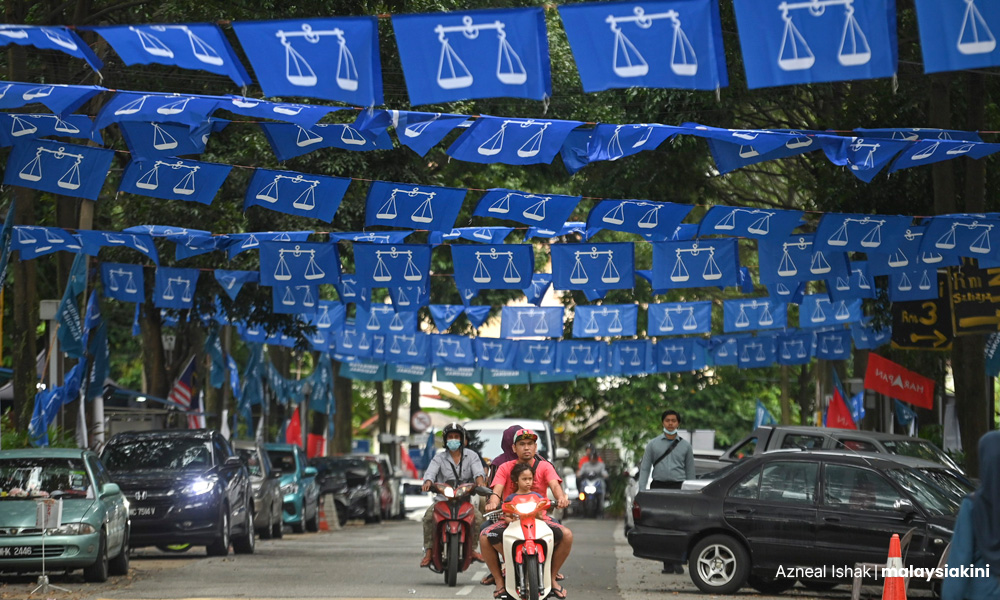
Some of its more capable and respected leaders look poised to win their seats - Mohamad Hasan in Rembau and Hasni Mohammad in Simpang Renggam.
The seats to watch where Umno is facing challenges are two-fold:
Those with Zahid’s gang, among whom include Jamal Yunus in Sungai Besar, Maslin Sahm Razman in Kuala Kangsar, Ahmad Maslan in Pontian and Ab Hamid Mohd Nazahar in Kuantan. These men were seen to be favoured, better supported in their campaigns by the party, and part of Zahid’s effort to put his ‘boys’ into office to secure his control of the party.
The second group are seats where PN has undercut traditional Umno/BN support in the Malay community and appears to be winning more youth support.
As Malaysians repeatedly hear about Muhyiddin’s role on the National Recovery Council on the radio or through the many advertisements this coalition has found the money to pay for, there is confusion on the ground about who is PN and what is PN.
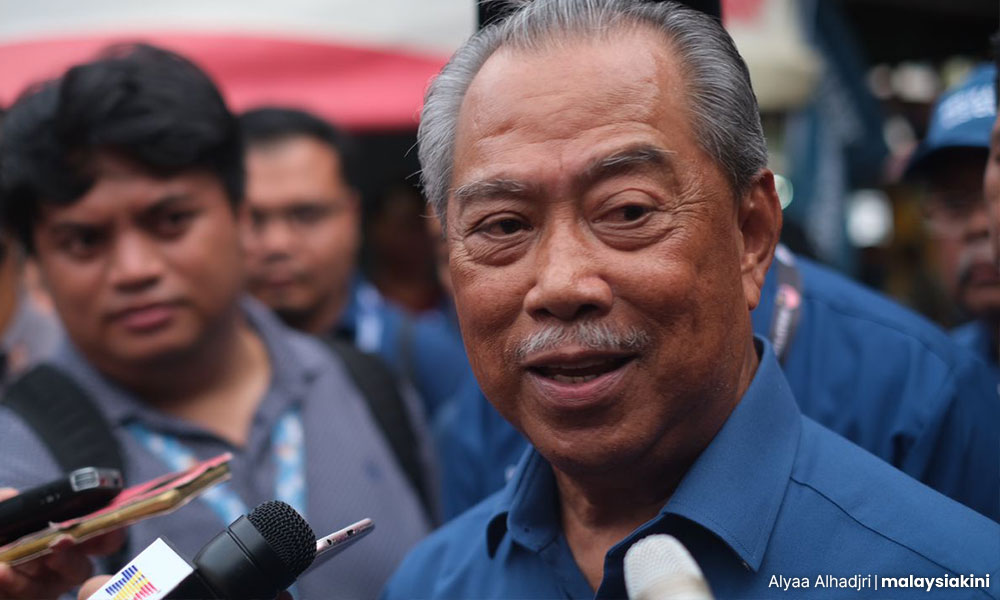
‘PN is not Umno’ has resonated with many voters, effectively (for some) painting itself as a cleaner and more caring government, a better protector.
The seats to watch where PN share impacts Umno include (again not exclusive): Muhyiddin’s seat in Pagoh (which Umno may in fact win after the anti-non-Malay divisive rhetoric in the campaign), Bukit Gantang in Perak, Masjid Tanah in Malacca and Hulu Terengganu in, as implied, Terengganu.
Another end of BN?
The component parties in BN - MCA and MIC - are facing challenges as well. Odds are MIC president SA Vigneswaran will now lose in Sungai Siput in Perak, but MIC remains confident.
Segamat in Johor is another area where the party is facing a fierce fight as MIC treasurer Ramasamy Muthusamy is contesting. Their campaign has been similar to that of Umno, aiming to pull out the base, by oiling the machinery and bringing out (Indian) voters to the polling stations.
As MIC struggles, MCA has put on a cool face, trying to ignore how ‘big brother’ Umno has left them to campaign on their own. Many Chinese businesses continue to support BN, and MCA has capitalised on this, yet on the ground, they are fighting the long-honed battle to pragmatically portray that they can represent Chinese Malaysians.
As Umno’s campaign star has dimmed, so has MCA’s, as it can no longer confidently promote itself as giving Chinese Malaysians a seat in the national government.
The seats where MCA faces this challenge include the traditional MCA seat of Tanjong Malim in Perak; Ayer Hitam and Tanjung Piai in Johor, among others. They believe they will hold their base, but it remains to be seen whether their base will hold onto them, as younger voters have come into the electorate.
Post-attack: A PN plateau?
PN’s embrace of attacking racialised rhetoric is seen by most Malaysians as reprehensible, dividing the country. Electorally this may impact its GRS allies in Sabah.
The attack on Christians does not go down well in Tuaran, Beluran or Ranau, where Muhyiddin’s allies are contesting. Only the northeastern seat of Beluran is understood to be highly competitive, due to the split between GRS and Umno there, but the rhetoric is not well received in this Christian-majority state.
More Sabahans are becoming aware of how close GRS is to PAS and the dominant role the Islamist party plays in this coalition, even as these contests remain centred around personality.
While PN’s hopes of winning non-Malay support may have hit a wall and will blowback in more multi-ethnic constituencies, this strategy based on ultra-Malay nationalism remains strong in many Malay dominant areas.
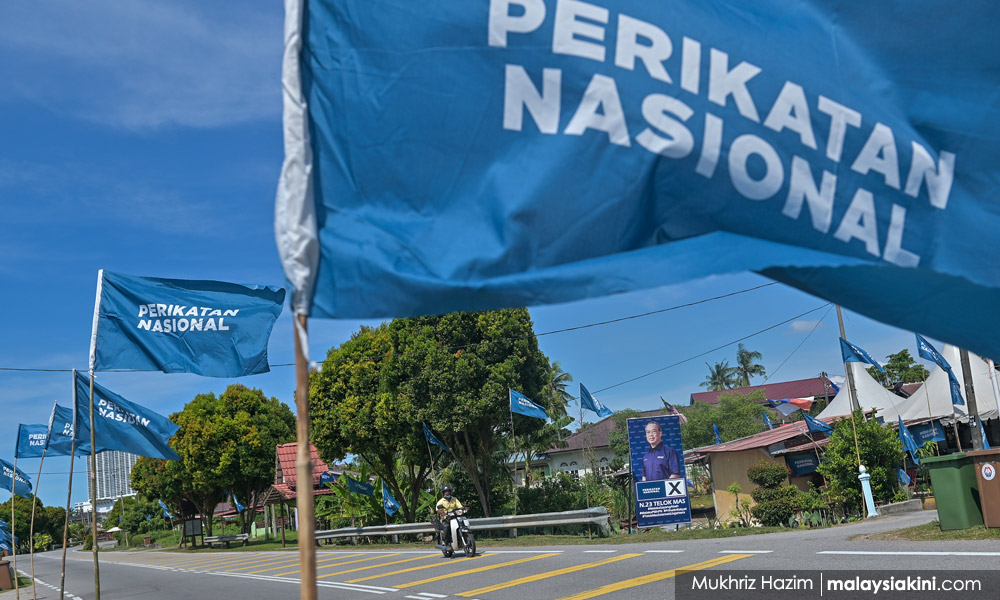
Seats like Larut in Perak or Temerloh in Pahang are competitive seats where PN bets on divisive rhetoric to undercut Umno. This rhetoric is seen to stir emotions of fear and displacement, old narratives (with even more bite) now appropriated from Umno for PN.
As in the Sabah 2020 campaign, in GE15 this coalition has been effective in taking over symbols and messages of Umno for its own end. It likely won’t save Bersatu supreme council member Azmin Ali in Gombak, but it may (or may not) save the real powerhouse in Bersatu, Hamzah Zainudin competing in Larut.
Harapan’s last hope?
The reawakening of hope for Pakatan Harapan has gained momentum. Malay professors and NGOs have come out to support Harapan chairperson Anwar Ibrahim as the next prime minister.
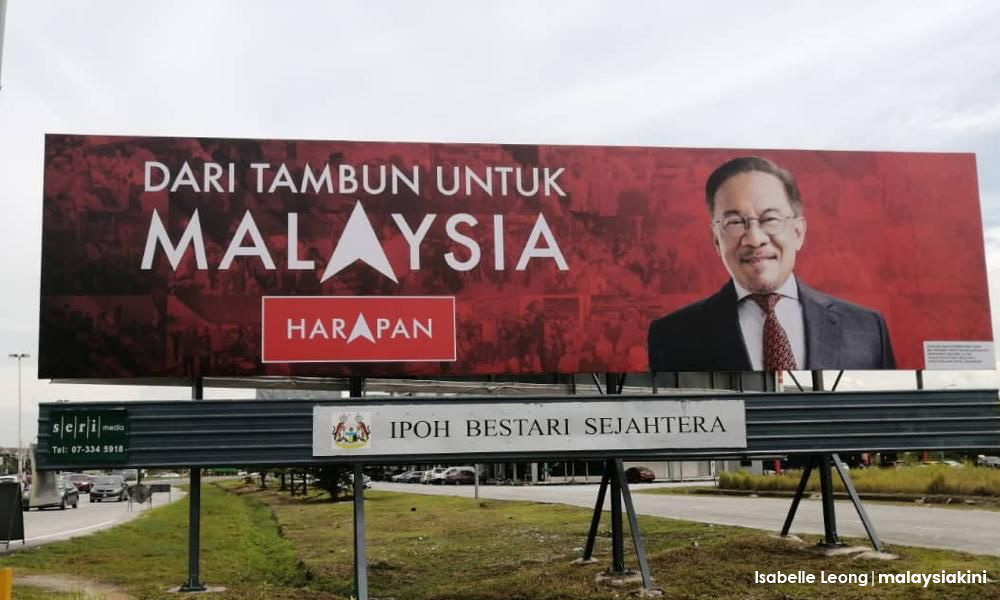
Yet Harapan should not be confident that they have enough numbers to form the government. They need a higher bar to convince others in Borneo to work with them.
Harapan has faced two different frontlines. The first has been a defensive one, holding onto their seats. Here Pahang – Kuantan, Indera Mahkota, Temerloh, Raub and Bentong – has been important. It is not a coincidence in the final hours Anwar went east.
Johor and Perak also remain intense battleground states. At least a third of the seats in both states remain competitive.
Another front is Borneo, where previously won Harapan seats in Sibu, Stampin, Sarikei, Miri, Lanang, Mas Gading and Tenom – are at risk.
Local parties in Sarawak and Sabah are posing challenges; Parti Bersatu Sarawak (PBS) is promoting more autonomy in seats like Stampin and Sibu, and similarly so Warisan is aiming to form a Borneo bloc and mirror itself like GPS in Sarawak. Seats like Penampang are hot, as voters are deciding whether to be part of Harapan or Warisan.
There is a similar type of conflict over whether to vote for the party or the candidate in Sungai Buloh as well, as voters decide the fate of BN’s Khairy Jamaluddin or the political viability of Harapan to form the national government.
The battle for Harapan extends across the country, as it needs to hold onto a similar share of Malay support it won in 2018 to capture many seats. The hot seats on this dimension include Pokok Sena in Kedah and Lumut and Parit Buntar in Perak and Kuala Selangor, in as implied, Selangor.
There is also a need to capture a large share of young voters that will vote. This is Harapan’s second challenge, to capture the imagination of the young, for Anwar to bring hope to the youth.
The messages have yet to fully do this, although younger voters are more excited as the reality of polling day draws near.
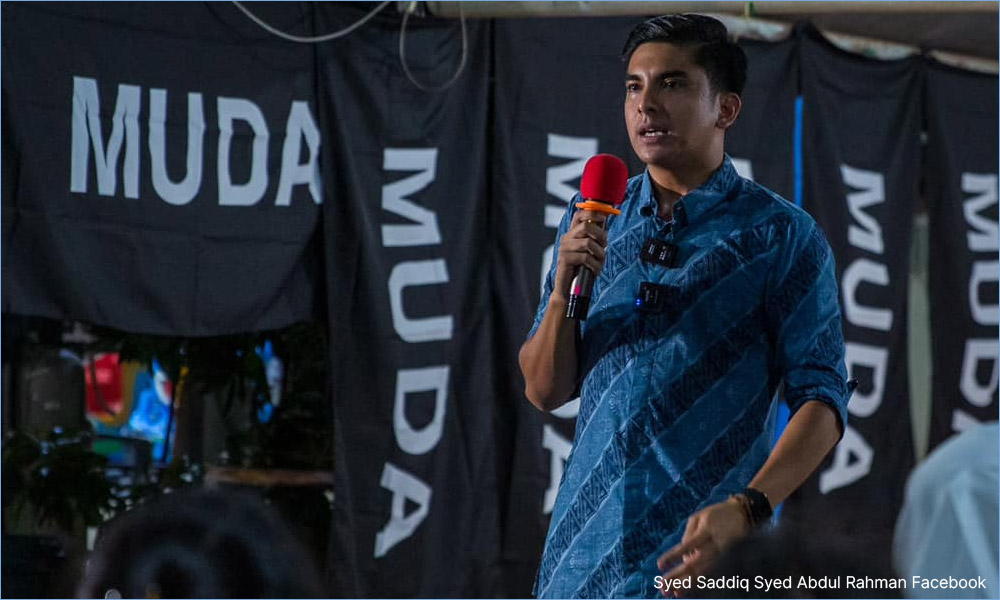
The engagement with the youth has been driven by Muda on social media. Rather than embrace new outreach, Muda was allocated tough seats and faces fierce battles in Tanjong Karang and even Muar, where the incumbent Syed Saddiq Syed Abdul Rahman is facing opposition from establishment forces in Johor.
Beyond Muda's youth focus in their Kertas Hitam, none of the three coalitions offers much substantively for younger voters in the manifestos.
The potential to reach out to the youth was not actualised in the campaign, and it remains not fully clear what Harapan offers youth voters, except a commitment to youth inclusion and more of a focus on education than other coalitions.
Ironically, GE15 is testing whether the coalition that expanded the youth vote will benefit from this mobilisation. None of the three coalitions offers much for younger voters either in the manifestos or in their campaigns.
A momentum of being with the winner, being with a forward-looking campaign most projected by Harapan in these final days is facing off against a campaign from PN that provided youth with relief during Covid-19 (a reality that can be questioned given youth suicides, unemployment and hardship during the height of Muhyiddin’s Covid lockdowns) and, in some cases in fierce constituencies, actual pocket money.
Becoming clearer slowly
Since the first part of the series was published two days ago, we have seen these three dynamics – an Umno/BN ratcheting up of its survival mode, a PN reversal support for non-Malays while still winning Malays, especially younger Malay voters and a last sprint effort by Harapan, aiming to get their hopes alive. Even in the last few hours, the contest remains too close to call in the final count.
Both Harapan and BN’s numbers are increasing with more confident seats, reaching 72 and 41 respectfully, while PN’s has levelled off at 35, there are 17 seats still fiercely in play.
Again, I reiterate, please vote.
Do note, if you would like to hear about individual seats and contests, where I describe local and broader national dynamics, check out my podcast series. - Mkini
BRIDGET WELSH is an honorary research associate of the University of Nottingham, Malaysia’s Asia Research Institute (Unari). She is also a senior research associate at the Hu Fu Centre for East Asia Democratic Studies and a senior associate fellow of The Habibie Centre. Her writings can be found at bridgetwelsh.com. Check out her Kerusi Panas podcast series.
The views expressed here are those of the author/contributor and do not necessarily represent the views of MMKtT.



No comments:
Post a Comment
Note: Only a member of this blog may post a comment.